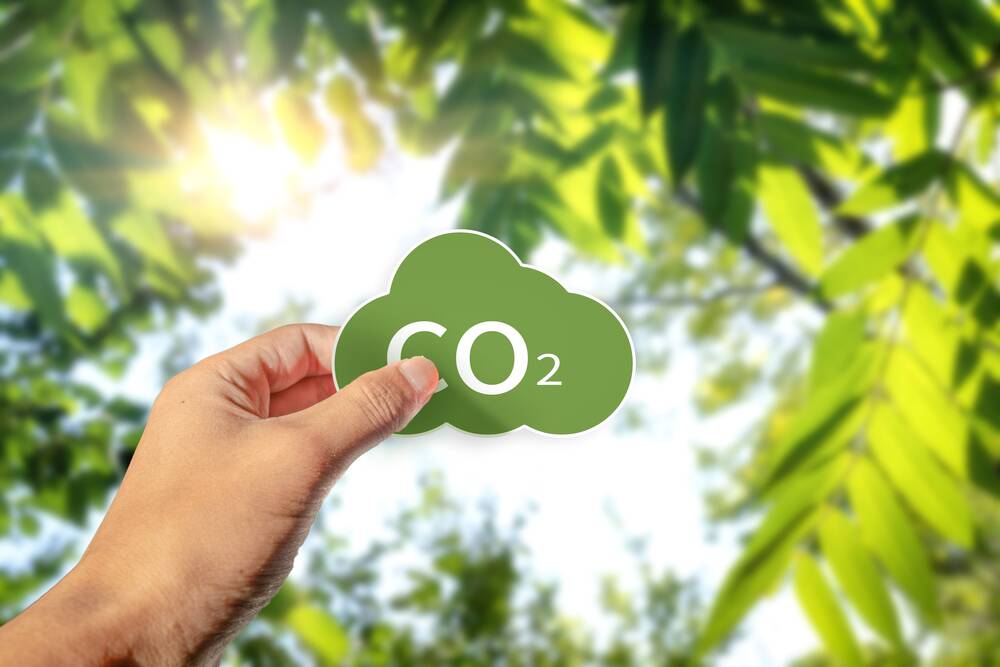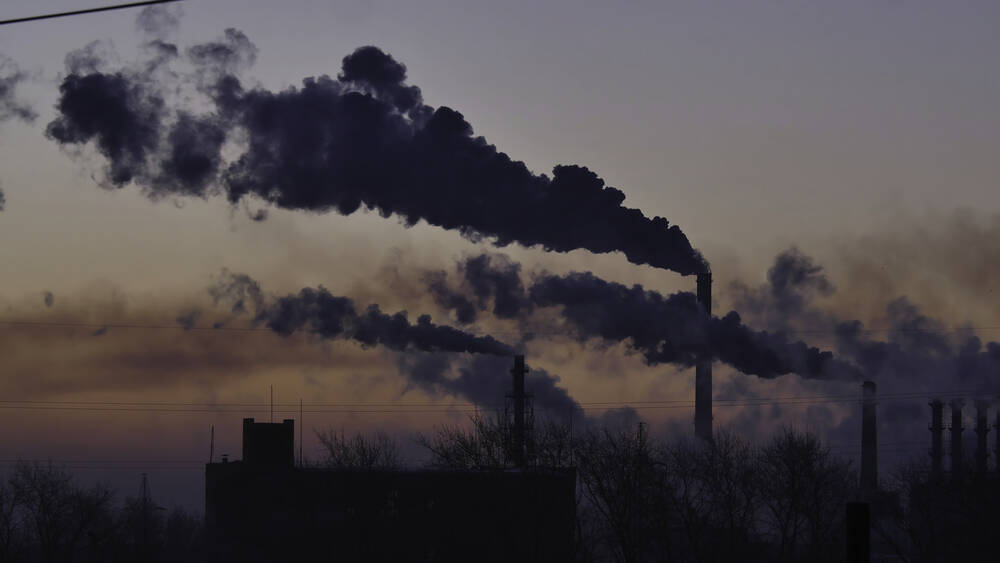Carbon pricing is an emerging method of combatting global warming, aiming to reduce greenhouse gas emissions by holding polluters financially accountable. The UK is at the forefront of this effort, with initiatives like the Carbon Price Floor and the UK Emissions Trading Scheme.
These carbon pricing instruments encourage the transition toward cleaner technologies while supporting national and global sustainability goals. Endorsed by organizations like the World Bank Group, carbon pricing initiatives are helping switch to a low carbon economy. By putting a cost on carbon, they help drive innovation, lower emissions, and drive sustainable change to a healthier, cleaner planet.
What Is Carbon Pricing?
Carbon pricing crucially shifts the cost of GHG emissions from the public (e.g. taxpayers) to the producers (e.g. airlines, manufacturers, fossil fuel companies).
In 2013, the UK introduced CPF, which ensures a minimum price for carbon emissions from electricity generation by adding an extra tax via the Carbon Price Support (CPS). Since then, all electricity generators have been required to pay for the carbon emissions by buying allowances in line with the CPF’s minimum price.
Beyond electricity, the ETS (UK Emissions Trading Scheme) applies for companies in power generation, aviation, heavy industry (steel, cement, or chemicals), as well as other large emitters.
ETS charges companies through a cap-and-trade scheme, where a limit is set on the total amount of emissions a company can emit, and companies must purchase permits where 1 allowance equates the right to emit 1 tonne of CO₂ equivalent.
Types of Carbon Pricing

Carbon Tax
Carbon tax is a direct price on carbon emissions set by the government, usually charging per tonne of CO₂ emitted. This fixed amount taxes them for every tonne emitted, with no cap on emissions.
It was first introduced in 1990, soon to be followed by other Nordic countries, and as of 2024 there are around 40 countries with active carbon tax schemes.
By doing so, they de-incentivise polluting by making it costly. Sweden currently holds one of the highest carbon tax rates globally at approximately $137 per tonne of CO₂, with Uruguay’s rate being significant but lower.
In the UK, carbon tax (amongst other schemes) has significantly influenced the energy sector, leading to a substantial decline in coal-fired energy production. In 2012, coal accounted for around 40% of the UK’s energy generation, down to just 1% in 2023, with the UK’s last coal-powered plant shutting down forever in 2024.
Emission Trading System (ETS)
Recognized by global institutions like the World Bank, Emission Trading Systems set caps on the total amount of emissions a company can emit within an annual period.
This follows a cap-and-trade mechanism, which works by first setting a total cap on the emissions for specific sectors—such as 1 million tonnes of CO₂ within a year for a steel company. Then allowances are distributed, with 1 allowance equating the right to emit 1 tonne of CO₂. The steel company, for instance, might receive 900,000 free allowances to help them stay competitive (as steel is both energy-intensive and trade-exposed). If the company was to only emit 800,000 tonnes, they would be able to send the remaining 100,000 on the market. On the flipside, if the company was to surpass the 900,000, they would need to purchase more.
In summary, ETS ensures emissions are capped and reduced over time while allowing companies flexibility to trade allowances, encouraging both environmental progress and cost-effective compliance.
Crediting Mechanism
A crediting mechanism is a system that generates carbon credits for projects or activities that reduce or remove greenhouse gas (GHG) emissions compared to a baseline scenario.
Carbon credits refer to a unit of measurement for greenhouse gas (GHG) emissions. Essentially, one carbon credit equates to one tonne of carbon dioxide (CO₂) or its equivalent in other GHG emissions. Carbon credits represent a decrease in GHG emissions that can be bought and sold on carbon markets.
These credits are an important tool in the fight against climate change. As the world continues to face the consequences of global warming, it is becoming increasingly important for countries and organizations to reduce their carbon footprint. Carbon credits provide a way for organizations to offset their emissions and contribute to a more sustainable future.
Some examples of carbon offsetting projects include reforestation, renewable energy, and clean cookstoves, delivering environmental benefits while supporting communities. By purchasing carbon credits, organisations can neutralise emissions they cannot yet eliminate and contribute to global sustainability.
At Gaia, we’ve built the UK’s largest marketplace for off-site BNG units, soon to be rolling out carbon credits—and it’s completely free to use. Sign up here.
RBCF
Results-Based Climate Finance (RBCF) funds climate projects once a specific, measurable result has been achieved instead of funding upfront. Projects can secure the initial funding from grants, loans, equity investments, or government support, with disbursements typically occurring in phases as measurable milestones are achieved.
This ensures that outcomes involving forest conservation, renewables, or emission reductions have been entirely achieved before funding is afforded. The system typically involves an agreement where a project outlines clear climate goals, the project is carried out, the project and its results are verified by an independent expert, and finally, the project is funded by the investors if results are achieved.
RBCF is a worldwide initiative with significant impacts in developing countries such as the Amazon Fund in Brazil. With major support from Norway and Germany, the Fund has achieved significant support for indigenous communities, promoted sustainable agriculture, and protected forests amongst a range of environmental benefits.
Internal Carbon Pricing
Carbon pricing is mandatory, imposed by governments, requiring real payments for emissions, however internal carbon pricing is voluntary, set by companies, guiding investments without external payments.
This could be shadow prices, where a company sets a hypothetical monetary value assigned to its GHG emissions on a per tonne basis. This helps evaluate whether a project makes financial sense, when keeping increasing carbon taxes and regulations in mind.
Moreover, this could involve an internal carbon fee, where departments inside a company are charged a fee linked to their emission totals. For example, a high-emitting manufacturing department could be ‘charged’ a significant fee, pulled from their operations and fed into green initiatives.
A third type of internal pricing are implicit carbon prices—representing the indirect cost of reducing emissions through investments in energy efficiency or renewable energy.
Carbon Pricing in the UK

UK Emissions Trading Scheme (UK ETS)
The UK Emissions Trading System (UK ETS) sets a cap on the total amount of emissions a company can emit within an annual period. This has been going since the start of 2021 when the UK left the EU; replacing the EU ETS ongoing since 2005.
The system only applies to energy-intensive industries (i.e. steel or glassmaking), power generating companies, and aviation companies including intra-European flights.
Companies can purchase allowances by attending governmental allowance auctions conducted via online platforms with a sealed bidding format. Alternatively, a secondary market operates online, run by financial exchanges and trading platforms.
This allows companies to sell their allowances, enabling others to buy additional allowances if they exceed their emission limits. By creating a market-driven mechanism, the UK ETS incentivizes companies to reduce emissions and invest in cleaner technologies to lower their costs.
Carbon Price Support (CPS)
Carbon Price Support (CPS) is an additional tax on fossil fuels, paid by power companies that generate electricity using natural gas or coal.
Introduced in 2013 to speed up the transition from fossil fuels to cleaner energy, CPS started at £4.94 per tonne of CO₂ and increased to £18 per tonne by 2016, where it remains today. CPS has been highly effective, making coal generation financially unviable and driving a widespread shift away from coal toward cleaner energy sources.
CPS is a component of the Carbon Price Floor (CPF), meaning that when the carbon price under the UK ETS is low (such as due to allowance oversupply, clean tech advances, or economic downturn), CPS ensures a higher, consistent minimum price is maintained to keep fossil fuel generation costly. They do so by adding an extra fine charge per tonne of CO₂ emitted by power generators.
All funding from CPS goes into the UK’s general budget, crucially feeding into healthcare, infrastructure, and other public services.
Climate Change Levy (CCL)
Also a tax related to carbon emissions, the CCL (Climate Change Levy) primarily targets non-domestic energy use in the UK, applying to businesses and public sector organisations. It charges their electricity, gas, and LPG (liquefied petroleum gas) usage—such as heating buildings, powering machinery, and running industrial processes.
This only applies to businesses above a threshold, renewable energy sources tend to be exempt, and energy-intensive industries which may be especially crippled by this tax have an extra option. An emission-high manufacturing company, for example, could qualify for a discount up to 90% simply for signing a CCA (Climate Change Agreement), outlying set commitments to specific emission reduction or energy efficiency targets.
Fuel Duty
Fuel duty taxes UK drivers of hydrocarbon fuels—a chemical compound composed of hydrogen and carbon which accelerates climate change. Prominent examples are petrol and diesel, which the vast majority of the UK vehicles still run on, due to a lack of accessible alternatives and very gradual price increases taking it to 52.95 pence per litre today.
The modern fuel duty began in 1993, and now raises billions of pounds annually. These go to the UK’s governmental budget and are fed into public funding.
With the UK’s EV (electric vehicle) landscape advancing at speed, manufacturers are planning to release more budget-friendly vehicles such as the £17,000 Renault Twingo—less than half of the average at around £40,000 for one EV in the UK in 2023.
With continued declines in price, advancing tech, and schemes like fuel duty intensifying, the UK’s over-dependence on emission-heavy vehicles should soon decrease.
International Carbon Pricing
International carbon pricing systems extend beyond individual countries, promoting broader emission reductions and enabling more collaborative and efficient carbon markets.
For instance, California’s successful cap-and-trade system which is linked with Quebec’s ETS. They hold joint carbon allowance auctions, increasing liquidity in a broader market, and allowing for the trade and sale of allowances cross-border.
Benefits of Carbon Pricing
Carbon emissions are the primary contributor to global warming. They add layers of greenhouse gases to the atmosphere and trap heat, raising the planet’s surface temperature, causing extreme weather, rising sea levels, droughts, biodiversity loss, and ocean acidification.
One of the most critical benefits of carbon pricing is its potential to protect life on Earth.
While individual actions can make a positive environmental impact, the large-scale emissions from major polluters have the greatest potential to significantly protect the planet’s atmosphere.

Before the Industrial Revolution (pre-1750), the concentration of CO₂ in the atmosphere was 280 parts per million (ppm)—a stable, healthy level. 275 years later, concentrations have risen to 420 ppm, with 450 ppm considered a critical threshold to avoid catastrophic climate change.
At our current trajectory, we could hit 450 ppm by the 2040s, which would mean widespread global warming, rising sea levels due to melting ice caps, ocean acidification, loss of essential marine ecosystems, and more frequent extreme weather events.
Carbon pricing and these types of taxes will likely increase over time to ensure that companies and industries are held accountable for their carbon emissions and encourage the transition to a low-carbon economy. This is essential to avoiding the worst impacts of climate change and preserving a livable planet for future generations.
The Paris Agreement
The Paris Agreement is a global accord aimed at limiting global warming to well below 2C. It properly came into effect on November 4th 2016, created by 196 separate countries under the UNFCCC (United Nations Framework Convention on Climate Change), finalised in Paris during COP21.
To meet many emission reduction targets set at the agreement, countries began drawing out carbon pricing policies, such as carbon taxes and emissions trading systems (ETS), to incentivize industries to reduce their carbon emissions and help achieve climate goals.
FASTER Principles for Successful Carbon Pricing
Developed by the Carbon Pricing Leadership Coalition (CPLC) in 2017, the FASTER principles are a set of guidelines for any organisations or countries looking to design carbon pricing systems:
- Fairness: Reflecting the “polluter pays” principle, carbon pricing policies should be fair, avoiding disproportionate burdens on vulnerable groups.
- Alignment of Policies and Objectives: New carbon pricing policies should ensure equal opportunities and openly align with existing objectives.
- Stability and Predictability: Frameworks should be stable and robust, resulting in long-term certainty for businesses and stakeholders, encouraging investments in low-carbon technologies.
- Transparency: Carbon pricing systems should be transparent, with accessible data on pricing, emissions reductions, and revenue usage.
- Efficiency and Cost-Effectiveness: Systems should minimize the costs of achieving emissions reductions while reducing economic inefficiencies.
- Reliability and Environmental Integrity: The system should consistently meet emissions reduction targets while ensuring the integrity of environmental goals.
Challenges and Criticisms
Carbon pricing is critiqued by some for its potentially regressive impact on low-income households. Increased energy costs, higher transportation expenses, and many indirect price increases have a greater impact on some more than others.
A secondary critique is that it’s too slow a process to drive the necessary large-scale change—hence a necessary implementation of complementary policies and nuanced frameworks.
Global Carbon Pricing Examples
Some countries stand out more than others in terms of carbon pricing successes.
Sweden is deemed a world leader in carbon taxing, with its first implementation in 1991 as one of the very first countries. Their early start allowed publics to adapt early on, and lessen the impacts on the economy that shook other various countries. Their tax rates are higher than many other areas, rapidly encouraging emission reductions and allowing people to adapt, and it also covers a broad spectrum of industries from transport to heating.
Similarly, Switzerland has shown great successes with carbon pricing, combining high carbon tax rates, ETS integrations, and solid climate policies.
While both countries demonstrate effective carbon pricing mechanisms, the use of generated revenue differs; in Switzerland, a significant portion is directly returned to citizens, whereas in Sweden, it contributes to general government funds that may indirectly support green initiatives.
The Future of Carbon Pricing
In the UK, carbon pricing is likely to expand across a broader range of industries to massively accelerate emission reduction. While those targeted are some of the heaviest emitters, the fact remains that the remaining sectors contribute massively towards global carbon emissions, such as agriculture and construction.
Fostering international links would strengthen markets, widen opportunities, and allow for collaborative sustainable climate action.
In a global view, many more countries will likely adopt carbon pricing systems, with stronger global markets being formed that take an alien concept of carbon pricing and make it accessible, realistic, and driving actionable change.
Ultimately, carbon prices worldwide are expected to rise, initially focusing on the highest-emitting sectors and industries with the greatest carbon intensity.
More Information
https://carbonpricingdashboard.worldbank.org/what-carbon-pricing
https://unfccc.int/about-us/regional-collaboration-centres/the-ciaca/about-carbon-pricing
https://green-alliance.org.uk/publication/what-is-carbon-pricing-and-does-the-uk-need-it/
https://www.gov.uk/government/news/new-uk-levy-to-level-carbon-pricing
https://www.theccc.org.uk/wp-content/uploads/2019/08/Vivid-Economics-The-Future-of-Carbon-Pricing-in-the-UK.pdf
https://www.sciencedirect.com/science/article/pii/S0095069621001285
https://carbonpricingdashboard.worldbank.org/
https://documents1.worldbank.org/curated/en/901041467995665361/pdf/99570-WP-PUBLIC-DISCLOSE-SUNDAY-SEPT-20-4PM-CarbonPricingPrinciples-1518724-Web.pdf

